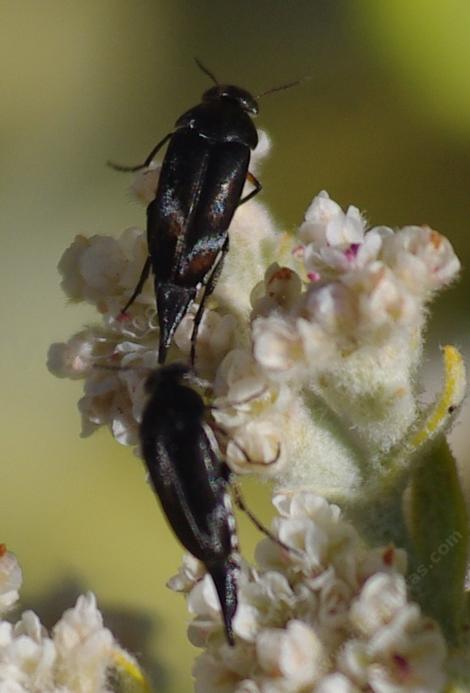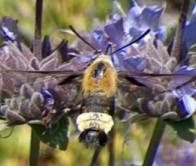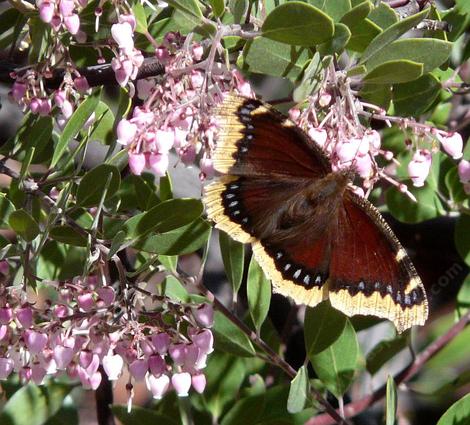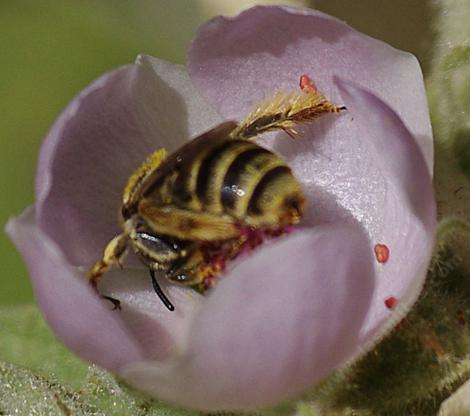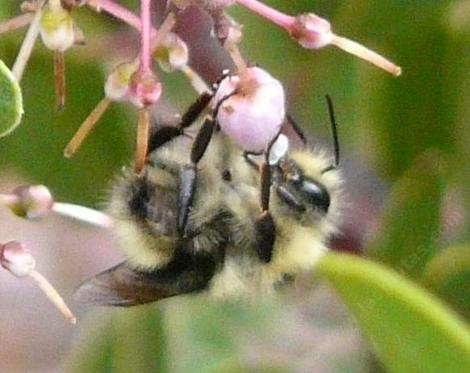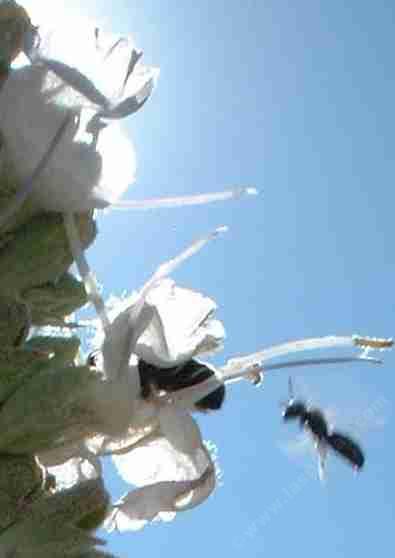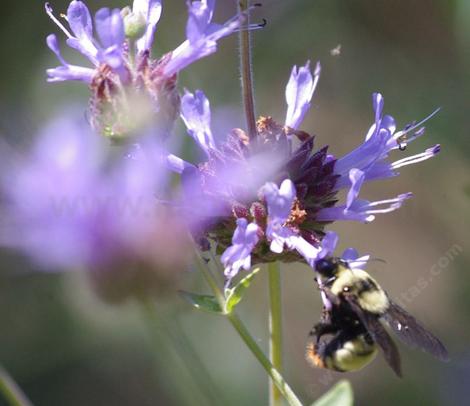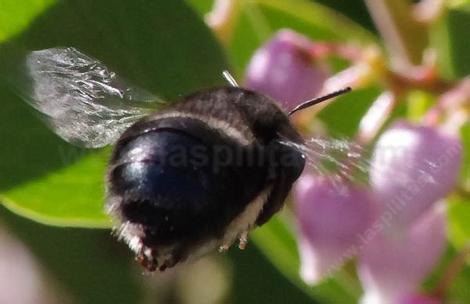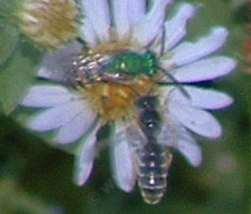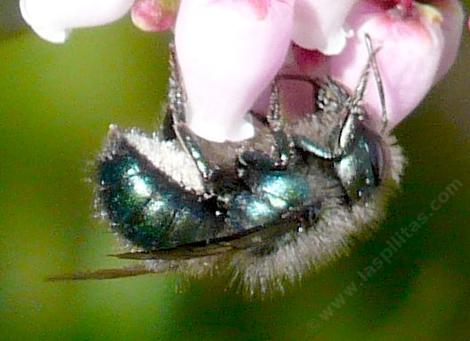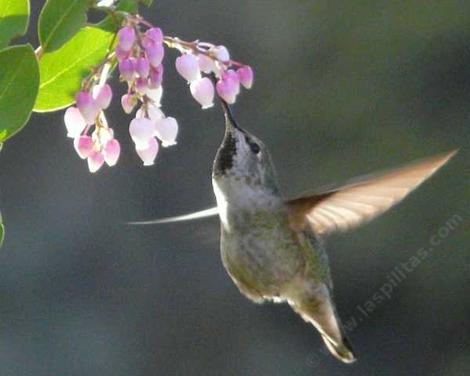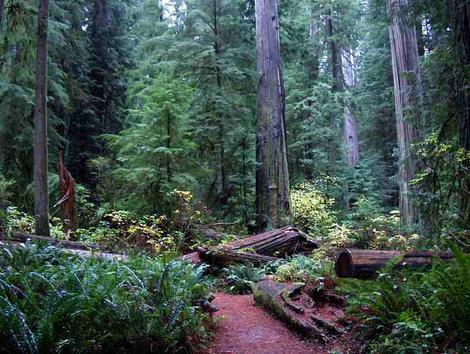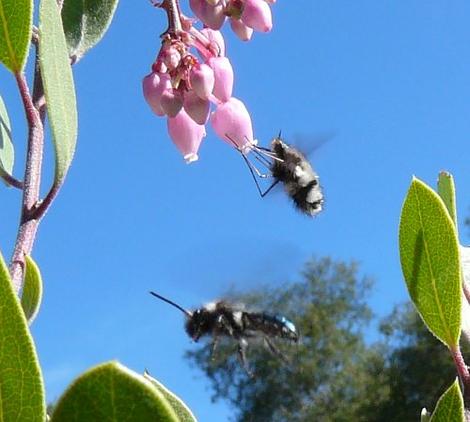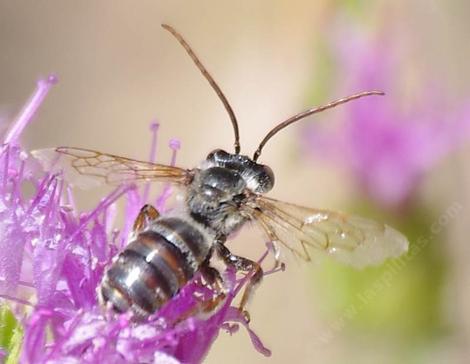California Native plants are pollinated by?
For those of you with allergies probably best to stay away from the wind pollinated genera. Many of the insect pollinated plants also can be wind or hummingbird pollinated to some degree. There is almost always a redundancy in native systems. But wind pollinated flowers have to generate a great deal more pollen than insect or bird pollinated flowers. For a plant that is living in a California ecosystem, pollen is expensive.. The riparian areas have more resources, so plants from riparian areas tend to be wind pollinated and your allergies can be awful near a marsh, pond or lake. Desert plants have to balance as there are limited insects along with limited resources so desert plants can be a little insect, bee, bird and even lizard pollinated.This information is only for native plants, largely California natives, and it's not complete, but there are enough species here that you can landscape a large place with no problems.
I only list Genera, species usually follow the genera, but not always...
Pollinated by insects
Abronia
Actaea
Adenostoma
Aesculus
Agoseris
Anemone
Anemopsis
Arabis
Aralia
Asarum
Asclepias
Aster
Baccharis
Baeria
Baileya
Bidens
Calandrinia
Calliandra
Calochortus
Calycanthus
Ceanothus
Chamaebatiaria
Clematis
Coreopsis
Cornus
Croton
Actaea
Adenostoma
Aesculus
Agoseris
Anemone
Anemopsis
Arabis
Aralia
Asarum
Asclepias
Aster
Baccharis
Baeria
Baileya
Bidens
Calandrinia
Calliandra
Calochortus
Calycanthus
Ceanothus
Chamaebatiaria
Clematis
Coreopsis
Cornus
Croton
Cuscuta
Cyperus
Daucus
Dogus
Encelia
Epipactis
Ericameria
Erigeron
Eriodictyon
Eriogonum
Eriophyllum
Erysimum
Euphorbia
Frankenia
Fraxinus
Geum
Gnaphalium
Gutierrezia
Helianthemum
Heliotropium
Heterotheca
Holodiscus
Horkelia
Hyptis
Isocoma
Jamesia
Cyperus
Daucus
Dogus
Encelia
Epipactis
Ericameria
Erigeron
Eriodictyon
Eriogonum
Eriophyllum
Erysimum
Euphorbia
Frankenia
Fraxinus
Geum
Gnaphalium
Gutierrezia
Helianthemum
Heliotropium
Heterotheca
Holodiscus
Horkelia
Hyptis
Isocoma
Jamesia
Jaumea
Lepidospartum
Linanthus
Lomatium
Mahonia
Malacothamnus
Malosma
Malus
Marah
Monolopia
Montia
Mucronea
Orthocarpus
Parnassia
Plantago
Platystemon
Pluchea
Prunus
Psorothamnus
Ptelea
Pycnanthemum
Rhamnus
Rhus
Ribes
Salix
Sambucus
Lepidospartum
Linanthus
Lomatium
Mahonia
Malacothamnus
Malosma
Malus
Marah
Monolopia
Montia
Mucronea
Orthocarpus
Parnassia
Plantago
Platystemon
Pluchea
Prunus
Psorothamnus
Ptelea
Pycnanthemum
Rhamnus
Rhus
Ribes
Salix
Sambucus
Sarcostemma
Saxifraga
Sedum
Senecio
Shepherdia
Sidalcea
Sisyrinchium
Smilacina
Solidago
Stanleya
Symphyotrichum
Tanacetum
Tauschia
Tellima
Tolmiea
Tiarella
Tofieldia
Toxicodendron
Turricula
Umbellularia
Viguiera
Vitis(the native ones are wind and insect)
Washingtonia
Xerophyllum (flies)
Zigadenus
Saxifraga
Sedum
Senecio
Shepherdia
Sidalcea
Sisyrinchium
Smilacina
Solidago
Stanleya
Symphyotrichum
Tanacetum
Tauschia
Tellima
Tolmiea
Tiarella
Tofieldia
Toxicodendron
Turricula
Umbellularia
Viguiera
Vitis(the native ones are wind and insect)
Washingtonia
Xerophyllum (flies)
Zigadenus
Pollinated by Butterflies or Moths
Achillea
Aesculus
Agastache
Agave
Amorpha
Aquilegia
Arctostaphylos
Asclepias
Aster
Baccharis
Baeria
Bahia
Bidens
Brickellia
Brodiaea
Calliandra
Camassia
Carnegia
Ceanothus
Cephalanthus
Cercis
Aesculus
Agastache
Agave
Amorpha
Aquilegia
Arctostaphylos
Asclepias
Aster
Baccharis
Baeria
Bahia
Bidens
Brickellia
Brodiaea
Calliandra
Camassia
Carnegia
Ceanothus
Cephalanthus
Cercis
Chlorogalum
Chrysothamnus
Cirsium
Coreopsis
Corethrogyne
Cornus
Crossosoma*
Croton
Encelia
Ericameria
Erigeron
Eriodictyon
Eriogonum
Eriophyllum
Erysimum
Helenium
Helianthus
Heliotropium
Heteromeles
Heterotheca
Isocoma
Chrysothamnus
Cirsium
Coreopsis
Corethrogyne
Cornus
Crossosoma*
Croton
Encelia
Ericameria
Erigeron
Eriodictyon
Eriogonum
Eriophyllum
Erysimum
Helenium
Helianthus
Heliotropium
Heteromeles
Heterotheca
Isocoma
Isomeris
Jaumea
Layia
Lepidospartum
Leptodactylon
Limonium
Linanthus
Lithophragma
Lobelia
Mentzelia
Mirabilis
Monardella
Mucronea
Oenothera
Orthocarpus
Oxalis
Plectritis
Pluchea
Prunus
Psorothamnus
Ptelea
Jaumea
Layia
Lepidospartum
Leptodactylon
Limonium
Linanthus
Lithophragma
Lobelia
Mentzelia
Mirabilis
Monardella
Mucronea
Oenothera
Orthocarpus
Oxalis
Plectritis
Pluchea
Prunus
Psorothamnus
Ptelea
Pollinated by native bees and bumblebees.
Achillea
Actaea
Adenostoma
Agastache
Allium
Amelanchier
Amorpha
Anaphalis
Anemopsis
Antennaria
Antirrhinum
Arbutus
Arctostaphylos
Argemone
Aster
Astragalus
Baccharis
Baeria
Baileya
Balsamorhiza
Bidens
Bloomeria
Calandrinia
Calochortus
Calystegia
Camassia
Campanula
Carnegia
Carpenteria
Cassia
Castanopsis
Castilleja
Ceanothus
Cephalanthus
Cercidium
Cercis
Cercocarpus
Chaenactis
Chamaebatia
Chamaebatiaria
Chilopsis
Chlorogalum
Chrysopsis
Clarkia
Clematis
Collinsia
Comarostaphylis
Coreopsis
Corethrogyne
Cornus
Crataegus
Croton
Cryptantha
Cucurbita
Dalea
Actaea
Adenostoma
Agastache
Allium
Amelanchier
Amorpha
Anaphalis
Anemopsis
Antennaria
Antirrhinum
Arbutus
Arctostaphylos
Argemone
Aster
Astragalus
Baccharis
Baeria
Baileya
Balsamorhiza
Bidens
Bloomeria
Calandrinia
Calochortus
Calystegia
Camassia
Campanula
Carnegia
Carpenteria
Cassia
Castanopsis
Castilleja
Ceanothus
Cephalanthus
Cercidium
Cercis
Cercocarpus
Chaenactis
Chamaebatia
Chamaebatiaria
Chilopsis
Chlorogalum
Chrysopsis
Clarkia
Clematis
Collinsia
Comarostaphylis
Coreopsis
Corethrogyne
Cornus
Crataegus
Croton
Cryptantha
Cucurbita
Dalea
Delphinium
Dendromecon
Descurainia
Dicentra
Diplacus
Dodecatheon
Dudleya
Dyssodia
Emmenanthe
Encelia
Epilobium
Eriastrum
Ericameria
Erigeron
Eriodictyon
Eriogonum
Eriophyllum
Erysimum
Eschscholzia
Fallugia
Ferocactus
Forestiera
Fouquieria
Fragaria
Frankenia
Fremontodendron
Gaultheria
Geranium
Grindelia
Gutierrezia
Haplopappus
Hazardia
Helenium
Helianthemum
Helianthus
Heteromeles
Heterotheca
Heuchera
Hibiscus
Hyptis
Iris
Isocoma
Isomeris
Jaumea
Keckiella
Larrea
Lasthenia
Lathyrus
Lavatera
Lepechinia
Lepidium
Lepidospartum
Lewisia
Limonium
Dendromecon
Descurainia
Dicentra
Diplacus
Dodecatheon
Dudleya
Dyssodia
Emmenanthe
Encelia
Epilobium
Eriastrum
Ericameria
Erigeron
Eriodictyon
Eriogonum
Eriophyllum
Erysimum
Eschscholzia
Fallugia
Ferocactus
Forestiera
Fouquieria
Fragaria
Frankenia
Fremontodendron
Gaultheria
Geranium
Grindelia
Gutierrezia
Haplopappus
Hazardia
Helenium
Helianthemum
Helianthus
Heteromeles
Heterotheca
Heuchera
Hibiscus
Hyptis
Iris
Isocoma
Isomeris
Jaumea
Keckiella
Larrea
Lasthenia
Lathyrus
Lavatera
Lepechinia
Lepidium
Lepidospartum
Lewisia
Limonium
Linanthus
Linaria
Lithophragma
LomatiumPurshia glandulosa
Lonicera
Lotus
Ludwigia
Lupinus
Lycium
Lyonothamnus
Machaeranthera
Mahonia
Malacothamnus
Malosma
Malus
Marah
Maurandya
Mentha
Mentzelia
Mimulus
Nama
Nemophila
Nicotiana
Nolina
Olneya
Opuntia
Ornithostaphylos
Orobanche
Orthocarpus
Osmaronia
Oxalis
Oxytropis
Paeonia
Parnassia
Pedicularis
Penstemon
Petrophytum
Phacelia
Philadelphus
Pickeringia
Platystemon
Pluchea
Polemonium
Potentilla
Prosopis
Prunella
Prunus
Psilostrophe
Psoralea
Psorothamnus
Ptelea
Purshia
Pycnanthemum
Ranunculus
Linaria
Lithophragma
LomatiumPurshia glandulosa
Lonicera
Lotus
Ludwigia
Lupinus
Lycium
Lyonothamnus
Machaeranthera
Mahonia
Malacothamnus
Malosma
Malus
Marah
Maurandya
Mentha
Mentzelia
Mimulus
Nama
Nemophila
Nicotiana
Nolina
Olneya
Opuntia
Ornithostaphylos
Orobanche
Orthocarpus
Osmaronia
Oxalis
Oxytropis
Paeonia
Parnassia
Pedicularis
Penstemon
Petrophytum
Phacelia
Philadelphus
Pickeringia
Platystemon
Pluchea
Polemonium
Potentilla
Prosopis
Prunella
Prunus
Psilostrophe
Psoralea
Psorothamnus
Ptelea
Purshia
Pycnanthemum
Ranunculus
Rhamnus
Rhododendron
Rhus
Ribes
Romneya
Rosa
Rubus
Rudbeckia
Salazaria *
Salix **
Salvia
Sanicula (mostly oligolectic bees)
Sarcostemma
Satureja (spent hours finding nothing, but it should be small native bees)
Saxifraga
Scrophularia
Scutellaria
Sedum
Senecio
Senna
Sidalcea
Silene
Smilacina
Solanum
Solidago
Sphaeralcea
Spiraea
Stachys
Stanleya
Staphylea
Styrax
Symphoricarpos
Symphyotrichum
Tanacetum
Tolmiea
Tetradymia
Thermopsis
Trichostema
Trifolium
Turricula
Vaccinium (buzz-pollination)
Vancouveria
Verbena
Viguiera
Viola
Washingtonia
Whipplea
Wyethia
Xylococcus
Zauschneria
Zigadenus
Ziziphus
Rhododendron
Rhus
Ribes
Romneya
Rosa
Rubus
Rudbeckia
Salazaria *
Salix **
Salvia
Sanicula (mostly oligolectic bees)
Sarcostemma
Satureja (spent hours finding nothing, but it should be small native bees)
Saxifraga
Scrophularia
Scutellaria
Sedum
Senecio
Senna
Sidalcea
Silene
Smilacina
Solanum
Solidago
Sphaeralcea
Spiraea
Stachys
Stanleya
Staphylea
Styrax
Symphoricarpos
Symphyotrichum
Tanacetum
Tolmiea
Tetradymia
Thermopsis
Trichostema
Trifolium
Turricula
Vaccinium (buzz-pollination)
Vancouveria
Verbena
Viguiera
Viola
Washingtonia
Whipplea
Wyethia
Xylococcus
Zauschneria
Zigadenus
Ziziphus
*There are a couple of oligolectic bees
that only work these, Perdita and Anthophora. Final report, 2003
Biennium, Clark County, Nevada
**Amer. J. Bot. 75(9):1387-1393. 1988 .1% wind pollinated, most 99.9% insect pollinated
For desert bee species the Minckley Lab is very helpful.
Catalog of hymenoptera in America north of Mexico / prepared cooperatively by specialists on the various groups of Hymenoptera under the direction of Karl V. Krombein, 1979
Also used many other sources to reference in this page. I searched thousands of articles in Google Scholar, http://www.freefullpdf.com/, http://www.scirus.com/, our image files and others. Again this is not peer reviewed and is meant to be an aid to the native plant community and garden designers, be accurate, but not perfect. Researched a hundred + hours, not thousands.
**Amer. J. Bot. 75(9):1387-1393. 1988 .1% wind pollinated, most 99.9% insect pollinated
For desert bee species the Minckley Lab is very helpful.
Catalog of hymenoptera in America north of Mexico / prepared cooperatively by specialists on the various groups of Hymenoptera under the direction of Karl V. Krombein, 1979
Also used many other sources to reference in this page. I searched thousands of articles in Google Scholar, http://www.freefullpdf.com/, http://www.scirus.com/, our image files and others. Again this is not peer reviewed and is meant to be an aid to the native plant community and garden designers, be accurate, but not perfect. Researched a hundred + hours, not thousands.
Largely wind pollinated.
Abies
Acer
Agrostis
Alnus
Ambrosia
Aristida
Artemisia
Atriplex
Batis
Betula
Bothriochloa
Calamagrostis
Carex
Castanopsis
Celtis
Cercocarpus
Chenopodium
Corylus
Cupressus
Acer
Agrostis
Alnus
Ambrosia
Aristida
Artemisia
Atriplex
Batis
Betula
Bothriochloa
Calamagrostis
Carex
Castanopsis
Celtis
Cercocarpus
Chenopodium
Corylus
Cupressus
Cyperus
Danthonia
Deschampsia
Distichlis
Elymus
Ephedra
Equisetum
Eurotia
Festuca
Franseria
Fraxinus
Garrya
Grayia
Heleocharis
Hordeum
Iva
Juglans
Juncus
Juniperus
Danthonia
Deschampsia
Distichlis
Elymus
Ephedra
Equisetum
Eurotia
Festuca
Franseria
Fraxinus
Garrya
Grayia
Heleocharis
Hordeum
Iva
Juglans
Juncus
Juniperus
Leymus
Libocedrus
Lithocarpus
Melica
Monanthochloe
Muhlenbergia
Myrica
Oryzopsis
Picea
Pinus
Plantago
Platanus
Pilitas
Poa
Populus
Pseudotsuga
Puccinellia
Quercus
Libocedrus
Lithocarpus
Melica
Monanthochloe
Muhlenbergia
Myrica
Oryzopsis
Picea
Pinus
Plantago
Platanus
Pilitas
Poa
Populus
Pseudotsuga
Puccinellia
Quercus
Salicornia
Scirpus
Sequoia
Sequoiadendron
Simmondsia
Spartina
Sporobolus
Stipa
Suaeda
Thalictrum
Thuja
Torreya
Triglochin
Tsuga
Typha
Urtica
Vitis (the non-native ones)
Scirpus
Sequoia
Sequoiadendron
Simmondsia
Spartina
Sporobolus
Stipa
Suaeda
Thalictrum
Thuja
Torreya
Triglochin
Tsuga
Typha
Urtica
Vitis (the non-native ones)
Antirrhinum
Aquilegia
Arbutus
Arctostaphylos
Beloperone
Calliandra
Calystegia
Castilleja
Chilopsis
Cirsium
Aquilegia
Arbutus
Arctostaphylos
Beloperone
Calliandra
Calystegia
Castilleja
Chilopsis
Cirsium
Delphinium
Diplacus
Dudleya
Fouquieria
Fremontodendron
Galvezia
Gaultheria
Gilia
Hibiscus
Isomeris
Keckiella
Diplacus
Dudleya
Fouquieria
Fremontodendron
Galvezia
Gaultheria
Gilia
Hibiscus
Isomeris
Keckiella
Lavatera
Lepechinia
Lilium
Lobelia
Lonicera
Maurandya
Mimulus
Monardella
Oenothera
Ornithostaphylos
Osmaronia
Lepechinia
Lilium
Lobelia
Lonicera
Maurandya
Mimulus
Monardella
Oenothera
Ornithostaphylos
Osmaronia
Other pollination methods.
Apomixis
DrabaOther pages that have information about pollinators.
California native bees, flies, beeflies, wasps and bumblebeesBumble bees and other California native bee species
Halictini, Sweat Bees
Andrena bee, is a great pollinator is called a mining bee or sand bee.
Criorhina is a Syrphid fly
Beefly, Bombylius major
Bembix, Large Yellow Sand Wasp
Melissodes, Long-horned bees
California Velvety tree Ant, Liometopum occidentale
Digger Bee, Anthophora edwardsii
Mason, blue orchard or Metalic leaf cutter bees, Osmia


